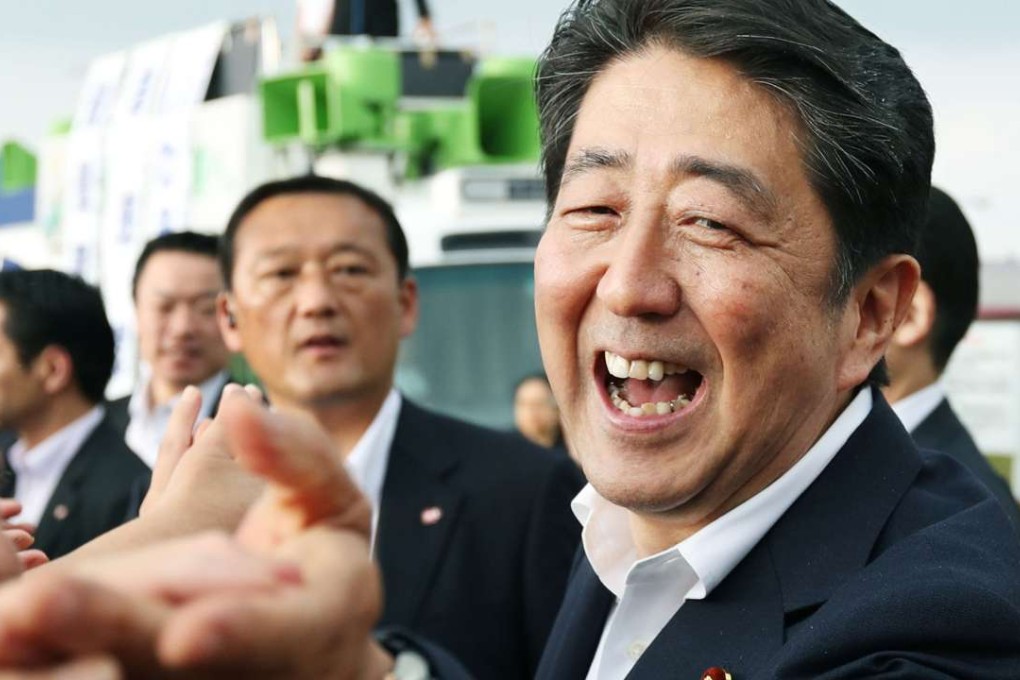
Almost four years after Japan’s Prime Minister Shinzo Abe launched “Abenomics” to revitalise the country after 20 years of economic stagnation, most have judged it a dismal failure. But to dismiss Abenomics out of hand would be to misread Abe’s true objectives.
Admittedly, first glance shows the policy’s “three arrows” have all fallen far short of their targets. The idea was that by pursuing radical monetary, fiscal and structural reform all at once, Abenomics would succeed where previous attempts at revival failed.
Drastic action certainly looked necessary. After two decades in which entrenched deflation destroyed domestic demand, and only endless supplementary government spending packages kept growth in positive territory, Japan’s gross public debt had reached 210 per cent of gross domestic product. To put that into perspective, it was double the debt level that provoked fiscal panic in the United States, and was approaching a point Japan’s finance ministry believed unsustainable.

The first and most eye-catching of the three arrows was monetary policy. The new Bank of Japan governor Haruhiko Kuroda threw the rule book out of the window and printed lots of money in an all-out effort to hit his inflation target of 2 per cent. By driving down the yen’s value, the central bank would push up the price of imported goods and boost exporters’ profits. Fatter profits, they hoped, would feed through into higher wages, encouraging consumers to spend more, adding to inflationary pressure. That would push interest rates into negative territory in inflation-adjusted terms, which in turn would embolden Japanese companies to invest more. The result: a virtuous circle of rising demand and faster growth which, coupled with higher prices, would shrink the real size of Japan’s public debt relative to GDP.
The second arrow was fiscal policy. At first it would be expansionary to kick-start demand. Once growth got going, the government would raise consumption tax to generate a primary budget surplus – before paying interest on its debt – by 2020.

